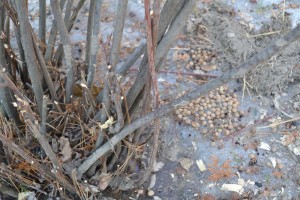Madison Parade of Homes 2014
Do It Yourself Landscape Plan for Homeowners
We are so excited for the opportunity to have created the landscape design for one of the 2014 Madison Parade of Homes entries! This gorgeous new home is located in Bristol Gardens in Sun Prairie, Wisconsin. The home was built by Farnsworth Builders.
 Sprout Landscape & Garden created a do-it-yourself (DIY) landscaping plan for the homeowners who were excited to put some sweat equity into their new home. But there were some things the homeowners needed assistance on, so Sprout provided guidance and additional manpower as needed. At Sprout, we’re here to help, and we can provide as much or as little help as needed!
Sprout Landscape & Garden created a do-it-yourself (DIY) landscaping plan for the homeowners who were excited to put some sweat equity into their new home. But there were some things the homeowners needed assistance on, so Sprout provided guidance and additional manpower as needed. At Sprout, we’re here to help, and we can provide as much or as little help as needed!
The focus of this do-it-yourself design was low maintenance plantings and beds. The choice of plants and spacing will allow for maximum future growth and reduce the amount of pruning and maintenance in the future. The beds were lined with weed barrier fabric and covered in a native washed stone for low maintenance.
But keep in mind, there is no such thing as “no-maintenance landscaping!” Every landscape takes some care.
If you have a yard, you will have to give it some care. But knowing the right plants and building materials can drastically reduce the amount of time you spend pruning, weeding, watering and managing your landscape. And of course planting the right plants in the appropriate places will reduce maintenance and increase the likelihood of survival, saving you money and time in the long run.
The other consideration with the plant selection in this Parade of Homes design was to make sure they are wind resistant. In new developments, wind can be a problem. We chose trees such as bur oak and greenspirelinden for their hardy nature. They will withstand much more extreme wind conditions than, for example, a soft wood maple.
Another important feature in this design is that the homeowners wanted plants that would be blooming all season and have a variety of fall colors. For this, we choice trees such as serviceberry for its characteristics. The serviceberry has lovely white flowers in the spring, attractive fruits that birds love to eat, and beautiful fall tones of orange, yellow and red.
See below for the a close-up of what you can expect for a do it yourself landscape design and please contact us today if you are interested in learning more!

















